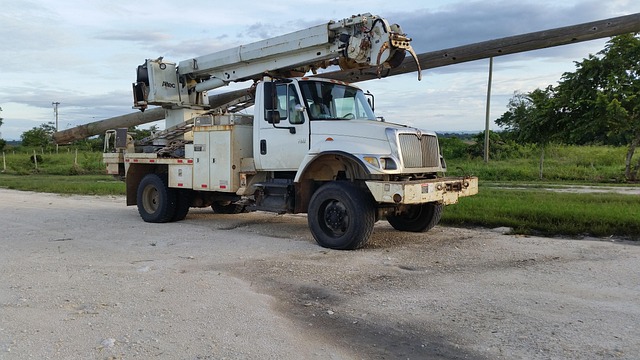Looking to register your car in California? This comprehensive guide walks you through the entire process, from understanding key requirements to securing your license plate. First, grasp California’s car registration mandates, including necessary documents for VIN (Vehicle Identification Number) verification. Then, learn how to conduct a VIN check and apply for registration with the DMV. Finally, discover steps to obtain plates and officially register your vehicle. Master these steps and hit the road with confidence!
- Understand California Car Registration Requirements
- Gather Necessary Documents for VIN Verification
- Perform Vehicle Identification Number (VIN) Check
- Apply for Registration with the DMV
- Obtain License Plate and Register Your Vehicle
Understand California Car Registration Requirements

Before registering your car in California, it’s crucial to understand the state’s specific requirements. One key aspect is ensuring that your vehicle has passed a valid vin verification process, which checks the vehicle identification number (VIN) for any discrepancies or theft issues. This step is essential to protect both you and the state from potential fraud.
In California, the Department of Motor Vehicles (DMV) mandates that vehicles undergo a safety inspection during registration. This includes checking the car’s lights, brakes, tires, and other critical components. Additionally, many local counties in California now require a vin inspection or mobile vin verifier service to be performed by an authorized agent before issuing a registration certificate. Ensure you meet these criteria to avoid delays or issues with your car registration process.
Gather Necessary Documents for VIN Verification

Before registering your car in California, you’ll need to gather several crucial documents for VIN (Vehicle Identification Number) verification. This process is a vital step in ensuring the accuracy and authenticity of your vehicle’s details. Among the essential papers required are the vehicle registration certificate from the state where the car was previously registered, proof of insurance, and a valid driver’s license or identification card.
Additionally, having a mobile VIN verifier or using a mobile vin verification service can streamline this process significantly. These services allow you to quickly capture and transmit your vehicle’s VIN data for inspection by the California Department of Motor Vehicles (DMV). This modern approach to VIN verification not only saves time but also enhances convenience, especially when compared to traditional methods that may involve visiting a DMV office or dealing with lengthy paperwork.
Perform Vehicle Identification Number (VIN) Check

Before you register your car in California, it’s crucial to perform a Vehicle Identification Number (VIN) check. This step is vital for ensuring that the vehicle you’re about to register is legitimate and hasn’t been reported stolen or has any outstanding issues. A mobile VIN verification service can be an efficient way to complete this task; these services allow you to conduct a thorough inspection of your car’s history from the comfort of your location.
By utilizing a mobile vin inspection tool, you can gain access to detailed information about your vehicle’s past, including its ownership history, accident records, and maintenance logs. This kind of VIN verification is particularly useful for buyers who want to make informed decisions before finalizing a purchase. With accurate data in hand, you’ll be well-prepared to navigate the registration process smoothly and securely.
Apply for Registration with the DMV

To begin the registration process for your vehicle in California, you’ll need to apply for registration with the Department of Motor Vehicles (DMV). This involves a few key steps. First, ensure your vehicle meets all safety and emissions standards by conducting a VIN verification, which can be easily arranged through a mobile vin verifier or during a vin inspection. With your vehicle compliant, head to your local DMV office or use their online services to submit an application for registration. Bring along essential documents such as proof of ownership, identification, and any required fees.
Once your application is approved, the DMV will assign a registration number and issue a license plate. This concludes the administrative side of registering your car, but remember, proper vehicle maintenance and inspections are still necessary to keep your registration current. Utilizing services like mobile vin verification can streamline this process, ensuring your vehicle’s documentation remains in order.
Obtain License Plate and Register Your Vehicle

After completing your vehicle’s purchase, it’s time to obtain a license plate and register your car with the California Department of Motor Vehicles (DMV). This process involves several steps to ensure your vehicle is legally compliant on California roads. One crucial step in this process is performing a VIN verification, which establishes the vehicle’s identity. You can complete this through a traditional DMV visit or opt for convenient alternatives like mobile VIN verification and inspection services.
These services allow you to verify your car’s Vehicle Identification Number (VIN) remotely, saving time and effort. A valid VIN inspection ensures that all information associated with your vehicle is accurate, including its make, model, year, and emissions compliance. Once your VIN details are confirmed, you can proceed with the registration process at a designated DMV center or through their online portal, making it easier than ever to register your new car in California.
Registering a car in California involves several straightforward steps, from understanding the state’s requirements to obtaining a license plate. By gathering the necessary documents for VIN verification and successfully completing the application process with the DMV, you’ll be on your way to legally operating your vehicle in the Golden State. Remember, a proper vin verification is crucial, ensuring both compliance and peace of mind.
